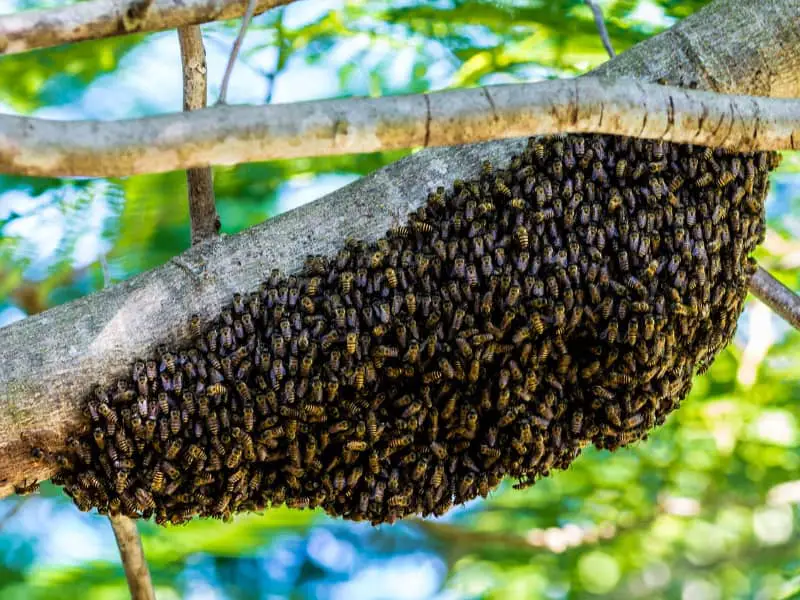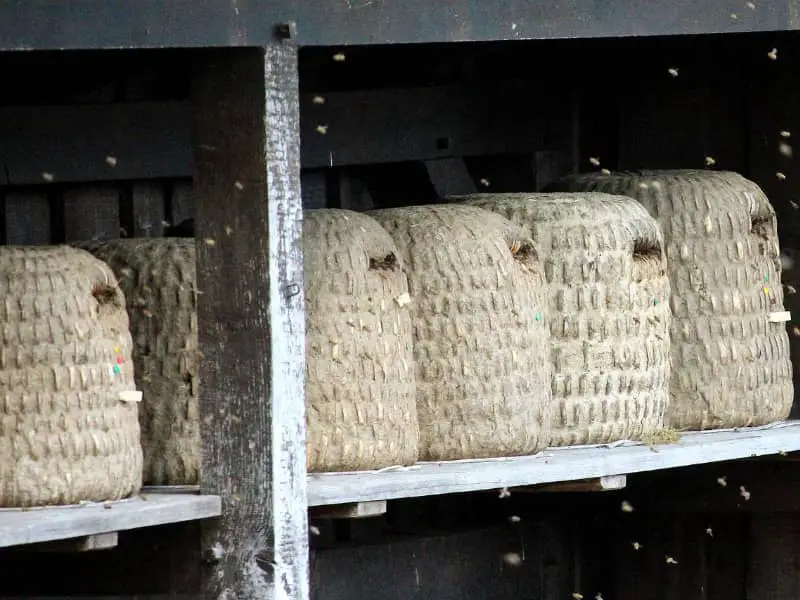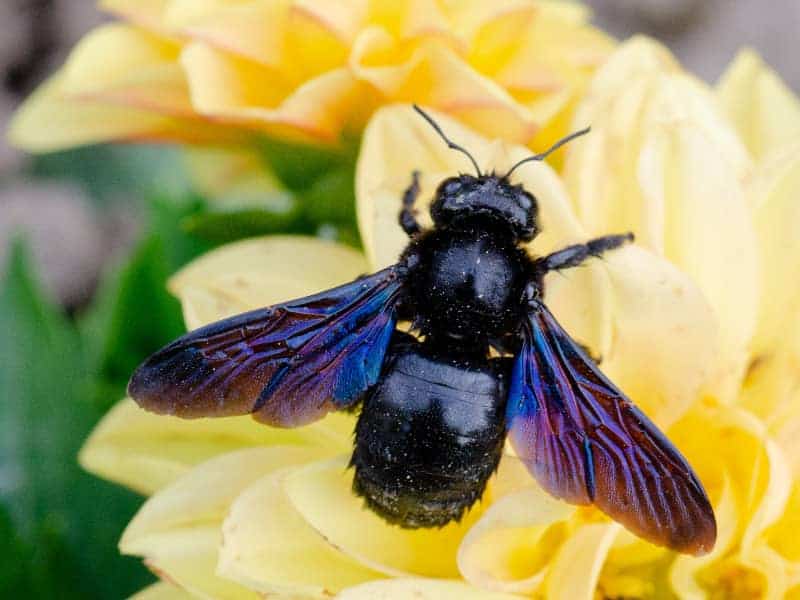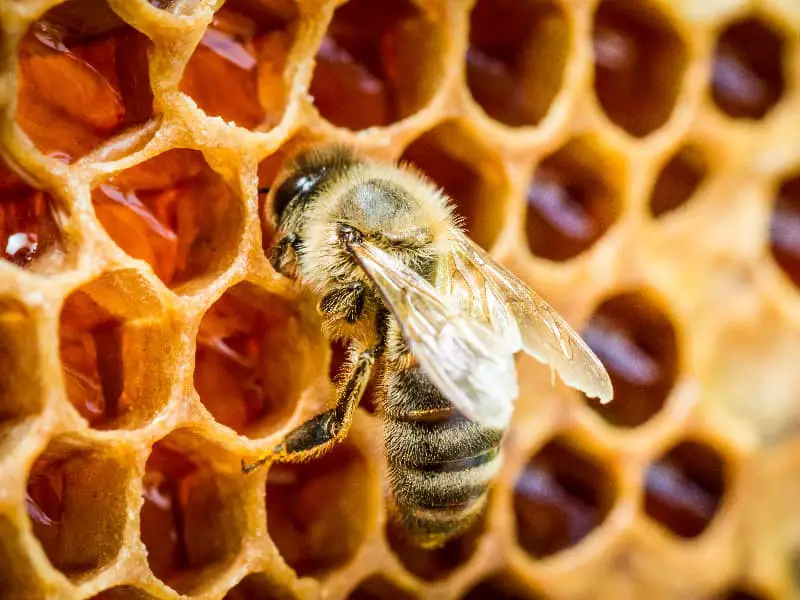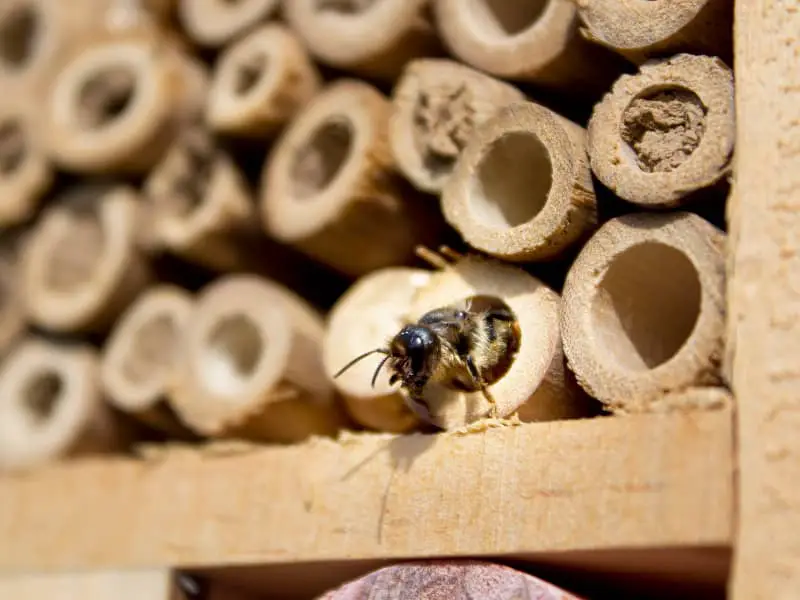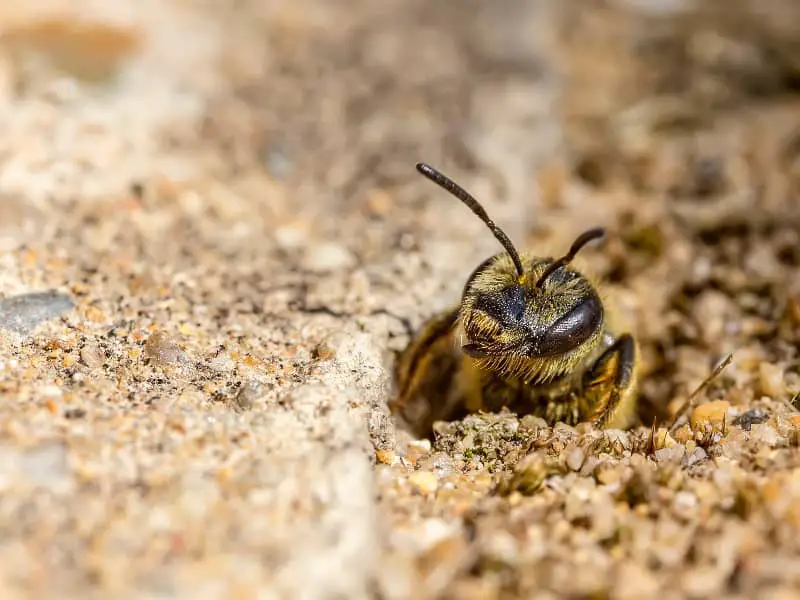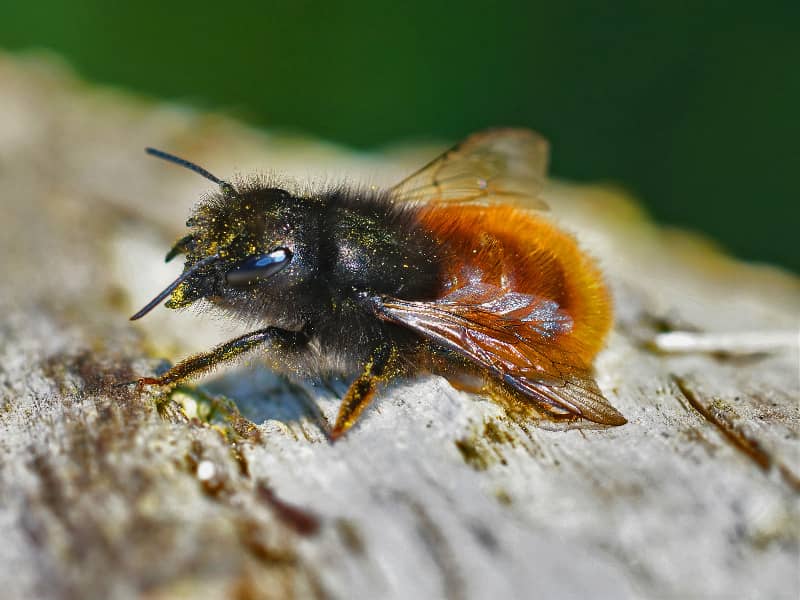
Horned mason bee
There are many creatures in our stunning natural world that are often overlooked, even though they play a fascinating role in our ecosystem. One such hidden beauty is the horned mason bee. This tiny but remarkable insect deserves a closer look. Join us as we delve into the mysterious world of this special bee and discover what makes it so unique.
The biology of the horned mason bee
The horned Mason beescientifically known as Osmia cornuta, belongs to the Megachilidae family. The most striking feature of this bee species are the small "horns" or appendages on the head of the males. These bees also have a shiny metallic body that can appear in various shades from green to blue.
The females of this species are slightly larger than the males and do not have the "horns" that give them their name. Their physique is robust and the hair color varies from dark brown to black.
Habitat and distribution
The horned mason bee is native to large parts of Europe. They can be found from the coastal regions of the Mediterranean to the more northern parts of Europe. Their preferred habitats are open landscapes with sandy or loamy soils. Here they find optimal conditions for nesting.
In urban areas, they can often be found in gardens or parks, especially near flowerbeds, as they are looking for nectar.
Nesting behavior and reproduction
An exciting aspect of the horned mason bee is its nesting behavior. Instead of living in large colonies like honey bees, these bees are loners. They look for small cavities in wood or in the ground to build their nests.
The female collects pollen and nectar, forms small "pollen loaves" and places them in the nesting cavity. She lays an egg on each of these "loaves". She then seals the cavity with a mixture of clay and saliva.
Why is the horned mason bee important for our ecosystem?
Could you imagine such a small creature having a big impact on our environment? In fact, horned mason bees play a crucial role in the pollination of plants. Their body structure and flight behavior make them efficient pollinators for many wildflowers as well as agricultural crops.
Without bees like the horned mason bee, many of the fruits and vegetables we regularly consume would be difficult to produce. By flying from flower to flower, they transfer pollen and thus help to ensure the reproduction of plants.
Threats and protective measures
Like many other bee species, the horned mason bee is exposed to various threats. The main threats include the loss of their habitat due to intensive agriculture and the spread of pesticides.
There are various measures to protect these bees. One of the easiest ways is to grow bee-friendly plants in gardens and parks. Equally helpful is the erection of bee hotels, small wooden structures with many cavities that serve as a nesting place for the bees.
Another step in the right direction is to reduce the use of pesticides. By using alternative pest control methods, we can help to protect these important pollinators.
Nutrition of the horned mason bee
Like many other bee species, the basic diet of the horned mason bee consists of nectar and pollen. But what exactly makes this food so important for them?
Nectar is the bee's main source of energy. It is rich in sugar and provides quick energy needed for the daily flight and other activities. Pollen, on the other hand, is a source of protein and is essential for the development of the larvae. The female collects pollen to deposit it in the nest cavity for her offspring.
It is remarkable how efficiently these bees collect pollen. Their densely hairy bodies enable them to pick up and transport pollen easily. They are specialized foragers and contribute significantly to the pollination of plants.
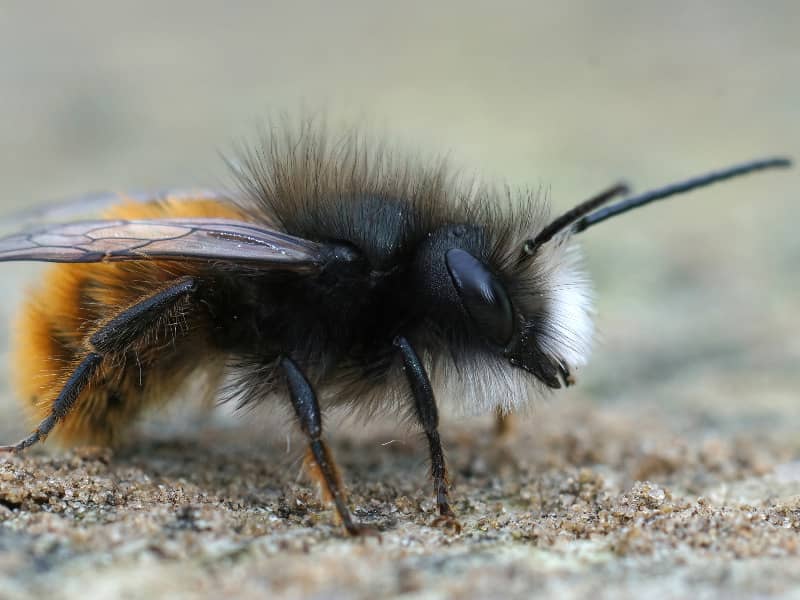
Natural enemies and defense mechanisms
Every creature, no matter how small, has natural enemies, and the horned mason bee is no exception. Its main enemies include birds, spiders and certain insects, especially predatory bugs and parasitic wasps.
So how does the horned mason bee protect itself from these threats? One of their main defense mechanisms is camouflage. Their metallic body can vary depending on the incidence of light, making it difficult for predators to spot them. They are also agile fliers and can flee quickly when threatened.
Another defense mechanism is their sting. Although they are generally not aggressive, they will sting if they feel threatened. However, their sting is nowhere near as painful as that of a wasp.
Communication and sensory perception
How do horned mason bees actually communicate? And how do they perceive their surroundings?
Bees, including the horned mason bee, communicate mainly via chemical signals known as pheromones. These can convey different types of information, such as warnings of danger or indications of food sources.
Bees also have impressive eyesight. They can see ultraviolet light, which helps them to identify flowers and other food sources more easily.
Climate change and its effects
Like many other insects, the horned mason bee is feeling the effects of climate change. Higher temperatures can affect their life cycle by causing them to emerge earlier from their winter habitat. This can lead to a lack of food sources as plants may not have flowered yet.
In addition, climate change can lead to extreme weather conditions, such as longer periods of drought or heavier rainfall, which can affect bee habitats.
Interesting facts about the horned mason bee
- Flying skillsThe horned mason bee is an impressive flyer. Their wings beat incredibly fast, allowing them to hover in the air or change direction abruptly.
- LongevityUnlike many other insects that only live for a few weeks, the horned mason bee can live for several months. This gives them enough time to care for their offspring and contribute to pollination.
- Sense of communityAlthough they are considered solitary bees, horned mason bees often nest close to conspecifics. This gives them an extra layer of protection against predators, as it is more difficult to catch a single bee in a group.
How can you promote the horned mason bee in your own garden?
If you now feel inspired and want to support this fascinating bee, there are several ways you can do this in your own garden.
- Bee-friendly plantsSome plants are particularly attractive to bees. These include lavender, sunflowers, clover and many more. These plants offer plenty of nectar and pollen, making them a feast for bees.
- Avoid pesticidesChemicals can be harmful to bees. If you want to make your garden bee-friendly, avoid using pesticides or choose organic alternatives.
- Providing nesting sitesAs already mentioned, horned mason bees love small cavities for nesting. You can buy special bee hotels or build your own to provide them with a suitable nesting place.
By following these simple steps, you can help to protect the population of the horned mason bee and at the same time make your garden a paradise for bees.
No products found.
The fascination of horned mason bees
You may be asking yourself: "Why should I be interested in such a small bee?" The answer is simple: every species, no matter how small, plays a role in our ecosystem. The horned mason bee may seem inconspicuous at first glance, but it makes a significant contribution to biodiversity and the pollination of our plants.
In fact, the more we learn about these bees, the more we can appreciate their role in our ecosystem and take action to protect them. By learning about the horned mason bee and other bee species, we can help preserve biodiversity and the health of our planet.
Author

-
Garden animal - A life with nature
Welcome to my animal blog! My name is Dirk and I am happy to take you on my journey through the fascinating world of animals and gardening.
Born 54 years ago, I have had an insatiable curiosity for the animal world around me since childhood. Although I have moved professionally in other industries, my true passion has always been animals and nature. It is remarkable how a small garden has become such an important part of my life.
Many of my fondest memories are associated with the animals that share our home. Whether it's the curious squirrels that scurry across the trees in the morning, the colorful variety of birds that visit our feeders, or the busy bees and butterflies that pollinate our flowers, every moment with them is invaluable to me.
This blog is my contribution to share my experiences, discoveries and insights with like-minded people. Here I will share stories of unforgettable encounters with animals, give tips on gardening and creating wildlife-friendly habitats, and take you on my journeys through nature.
Thank you so much for being here!
Cordial,
Dirk aka garden animal
Last posts
- 27. February 2024PetsVeganes Hundefutter – Grün und Gesund?
- 18. January 2024ChickensOregano für Hühner
- November 27, 2023HamsterDiurnal hamsters
- November 24, 2023HamsterHamster hammock
Letzte Aktualisierung am 2025-12-25 / Affiliate Links / Bilder von der Amazon Product Advertising API

